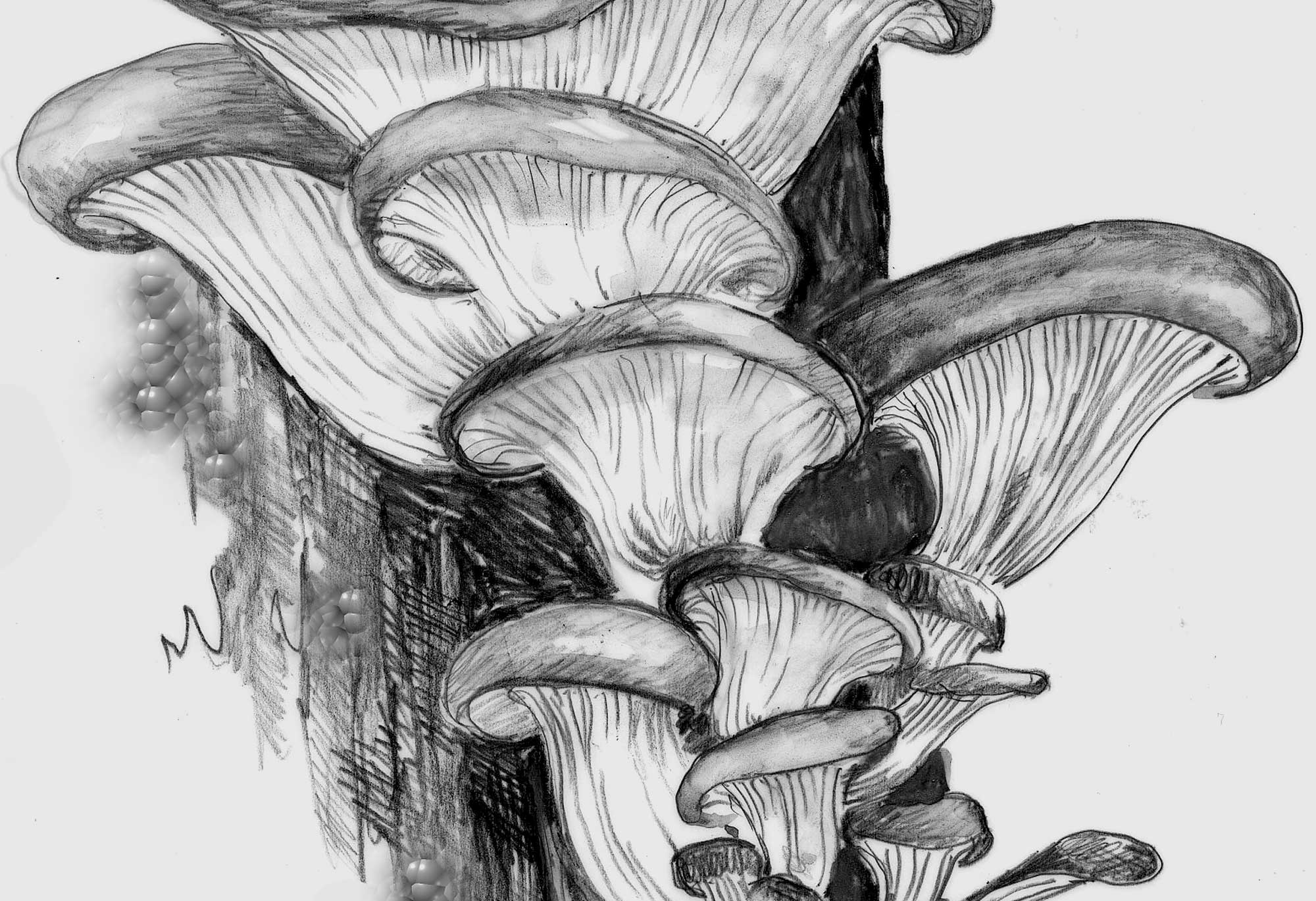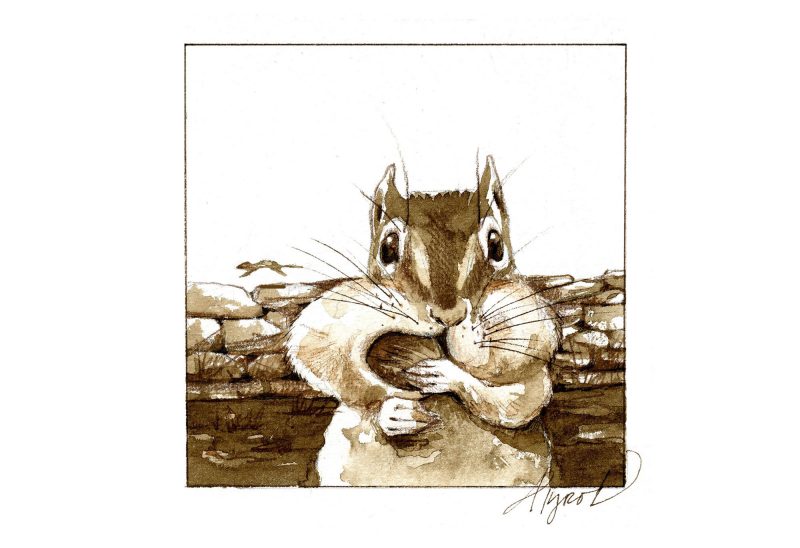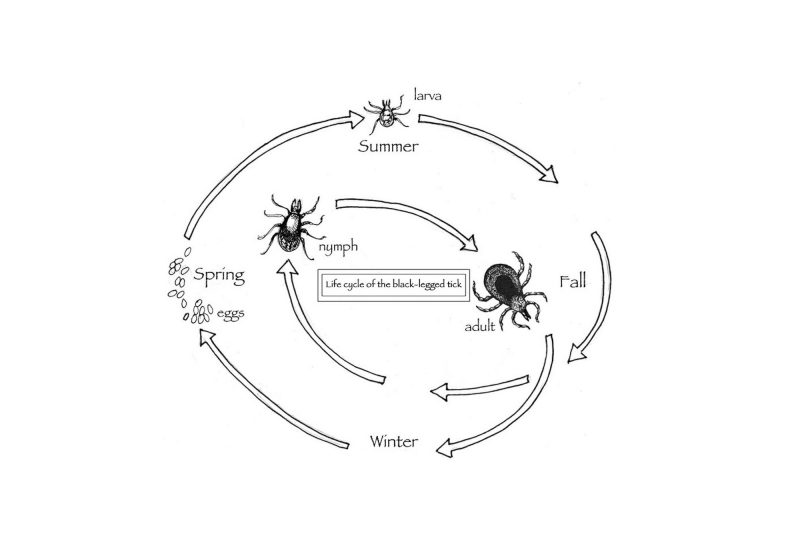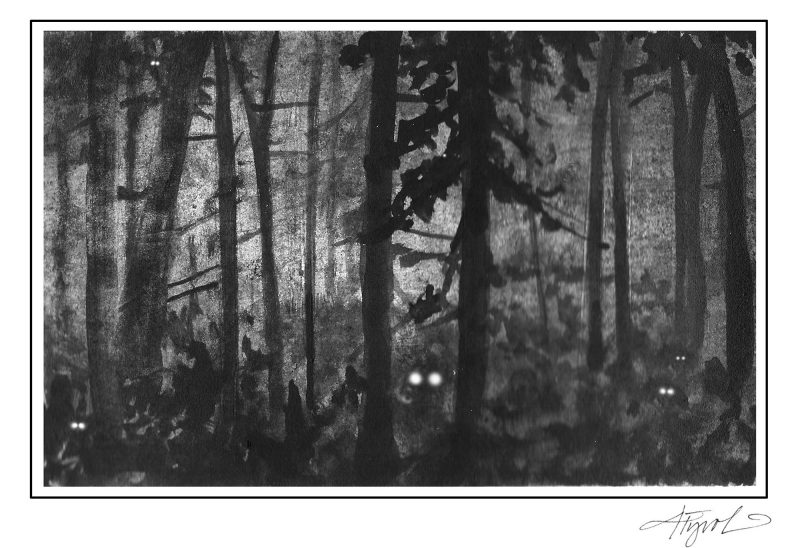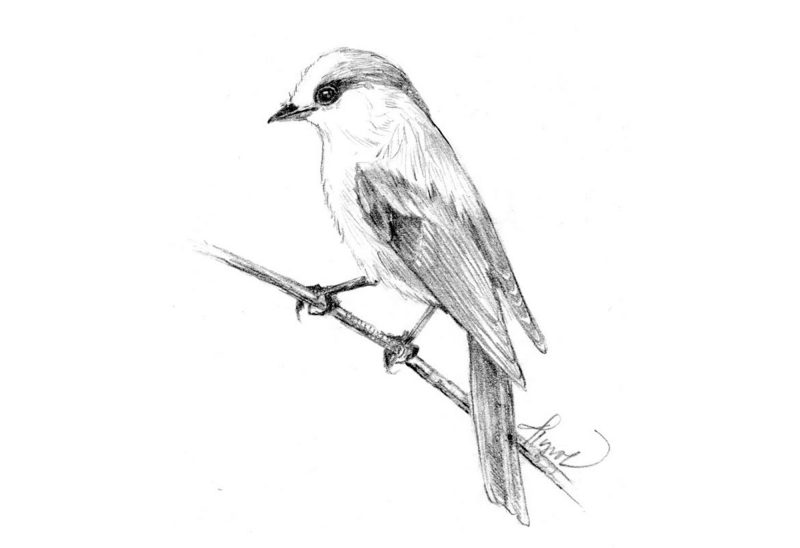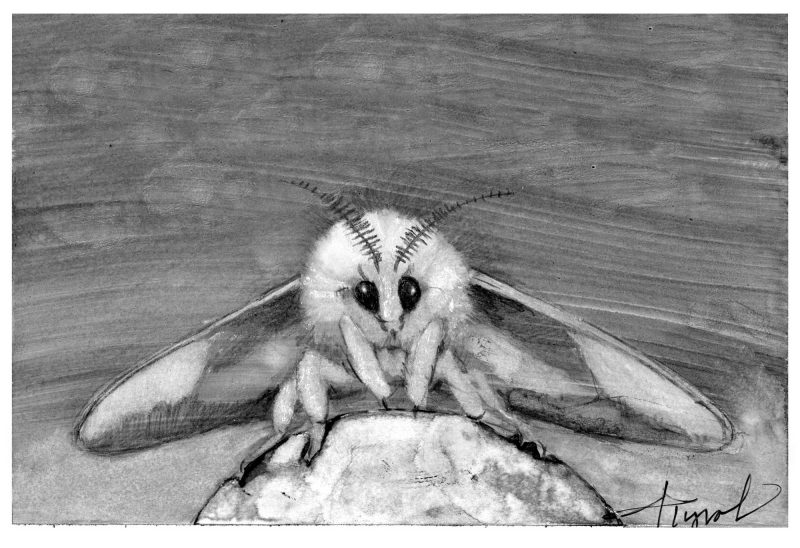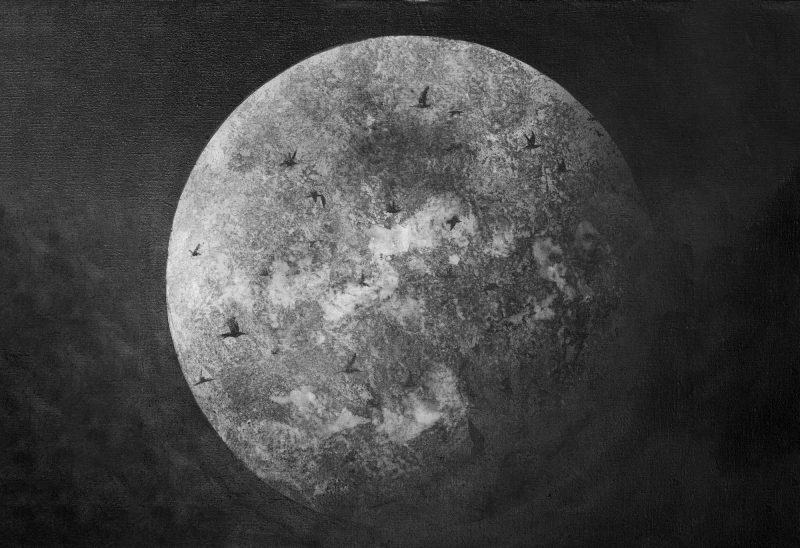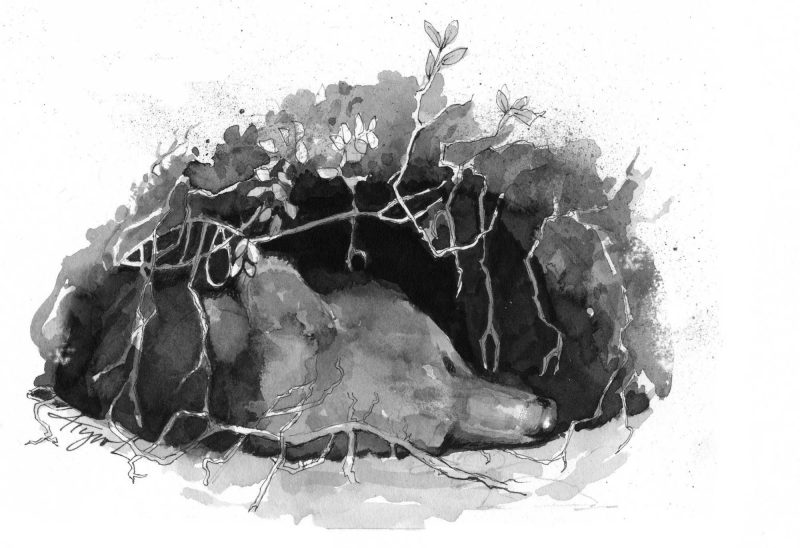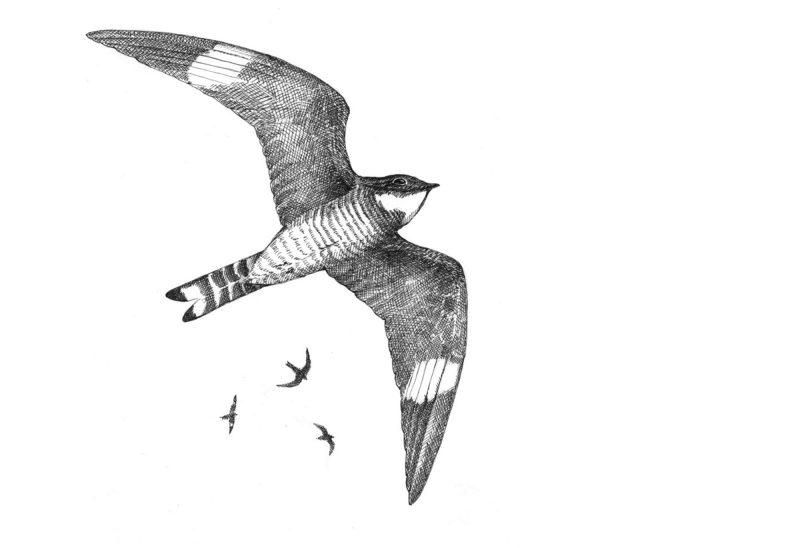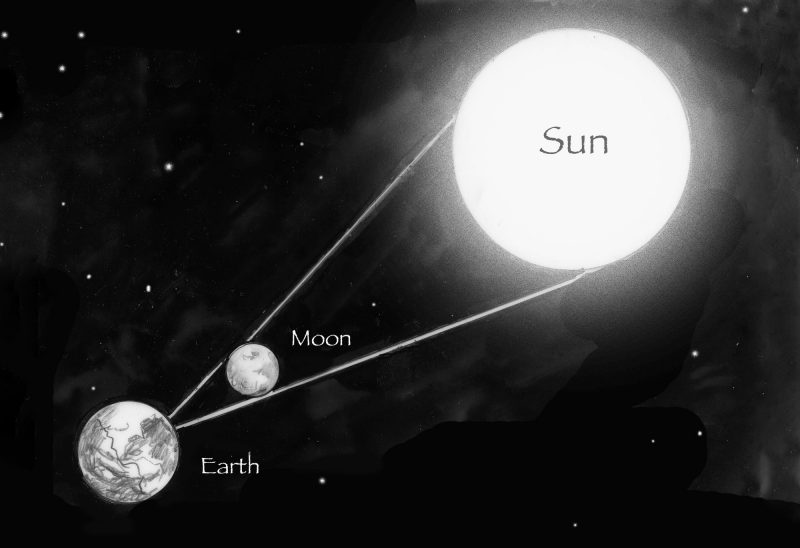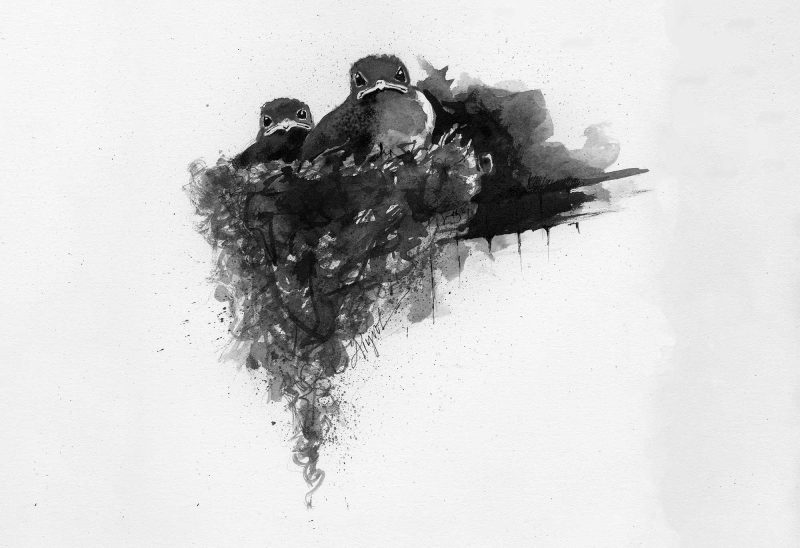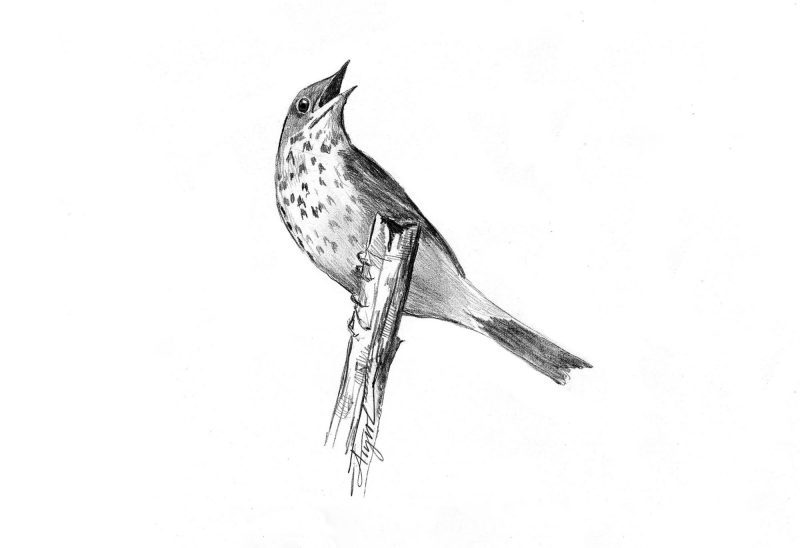By Rachel Sargent
The oyster mushroom: delicious, frequently spotted on veggie pizzas, and predatory. That’s right. The hyphae of many fungi, including the oyster mushroom, attack and paralyze prey. Then, as R. Greg Thorn of Western University enthusiastically described, the fungi “grow down their throats and digest them from the inside.”
Oyster mushrooms live in the trunks of dead or dying hardwoods. A couple different species grow in the Northeast, each preferring different tree species. Pleurotus ostreatus, the oyster mushroom that you find in the grocery store, is the least picky about where it grows, and it puts out its fruiting bodies from spring to fall.
Because they live on dead trees, these fungi have limited access to nitrogen. Dead wood has plenty of cellulose and lignin, but very little nitrogen-containing protein. So, like carnivorous plants (which are actually omnivorous, despite the label), oyster mushrooms have evolved a bag of tricks to supplement their diet by attracting and consuming nitrogen-rich prey.
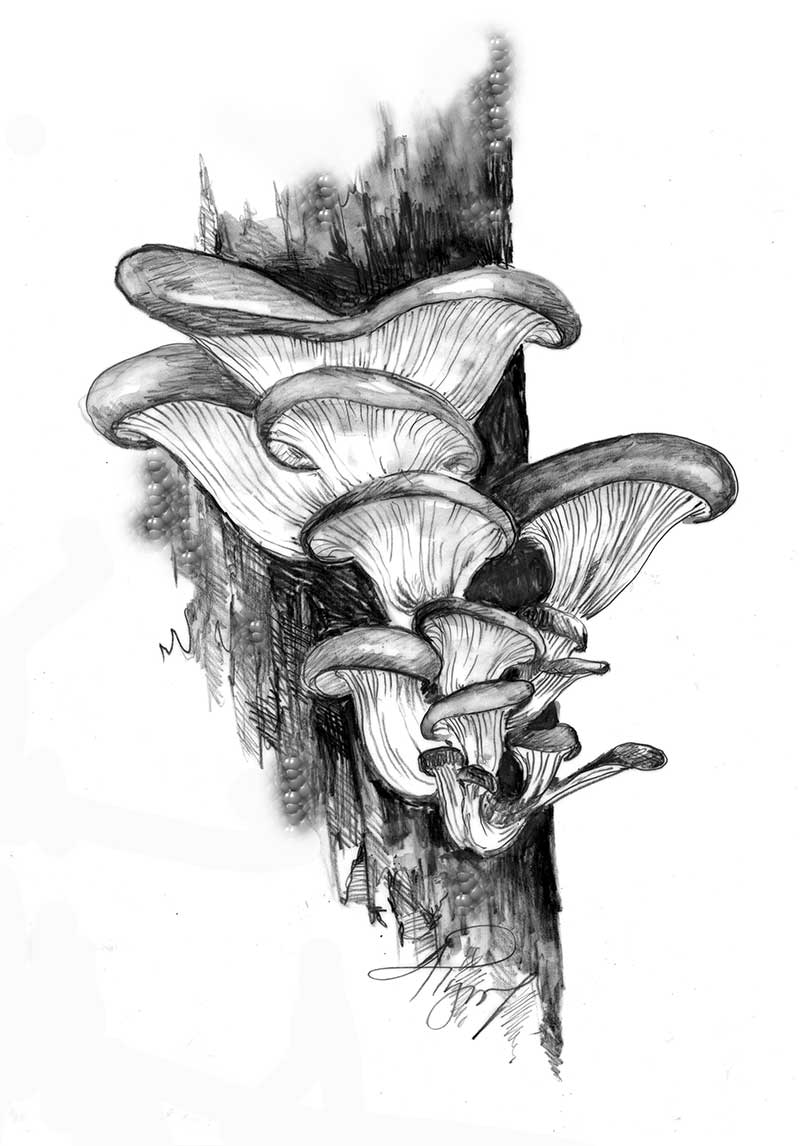
The oyster mushroom. Illustration by Adelaide Tyrol.
Mycologists first realized that oyster mushrooms can consume meat in the 1970s, when Thorn’s mentor, George Barron, made the discovery in “one of those great scientific accidents” involving a forgotten petri dish. Barron had been collecting carnivorous fungi from soil and growing them on petri dishes, but one of the dishes was forgotten in the lab for over six months. When his research technician finally found it, the fungus had produced a mushroom. That mushroom allowed them to finally identify the fungus, and to their surprise it was the familiar oyster mushroom. Barron checked similar fungi and found that all oyster mushrooms can eat meat in addition to wood.
If you’re picturing mushrooms lurking in the woods and snagging unwary hikers, don’t worry: the only animals they eat are microscopic nematodes. Despite the fact that most of us go through life without ever thinking much about nematodes, these small, worm-like animals are ubiquitous in most environments. In many habitats they outnumber other animals in both the number of individuals and number of species present. With so many of them in so many places, they make a great food resource for fungi.
So how does a stationary mushroom catch a worm? And how does it consume its prey? Nematodes, as tiny as they are, are burly compared to the hyphal filaments that make up a fungus, so the oyster mushroom needs a few advantages to gain the upper hand.
First, the oyster mushroom fungus plays a trick to attract nearby nematodes: it exudes chemicals that smell like dinner. Once a hungry nematode ventures close enough, the fungus uses a weapon called a “sticky nob,” which Thorn described as looking like a tiny lollypop. These nobs stick out like spines from the fungus’ hyphae. In some carnivorous mushrooms, the ball of the lollypop has a glue that is especially sticky to nematode skin, but the oyster mushroom uses a different strategy. Its “sticky nobs” aren’t sticky; instead, they have a toxin that paralyzes nematodes.
Once the nematode is immobilized, the fungus can harvest the victim’s nitrogen by sending hyphae through its body. Thorn described the moment of capture: “Watching through the microscope, you can see the nematode make one last pathetic attempt to wriggle away.”
Thorn likes to remind people that there is more to mushrooms than meets the eye. Even the familiar oyster mushroom, a mushroom that can regularly be seen on trees and pizzas, leads a secret life. In this case, it’s a microscopic battle of predator and prey.
This week’s Outside Story feature was written by Rachel Sargent, editor for a pharmacology journal and a freelance nature writer and illustrator. The Outside Story is assigned and edited by Northern Woodlands magazine and sponsored by the Wellborn Ecology Fund of New Hampshire Charitable Foundation. Illustration by Adelaide Tyrol.

